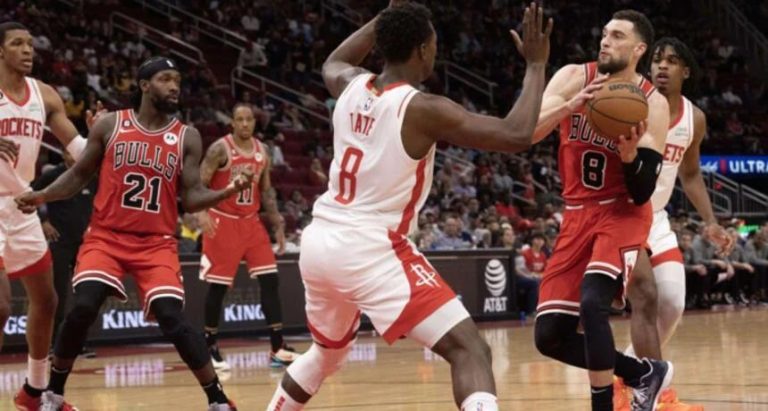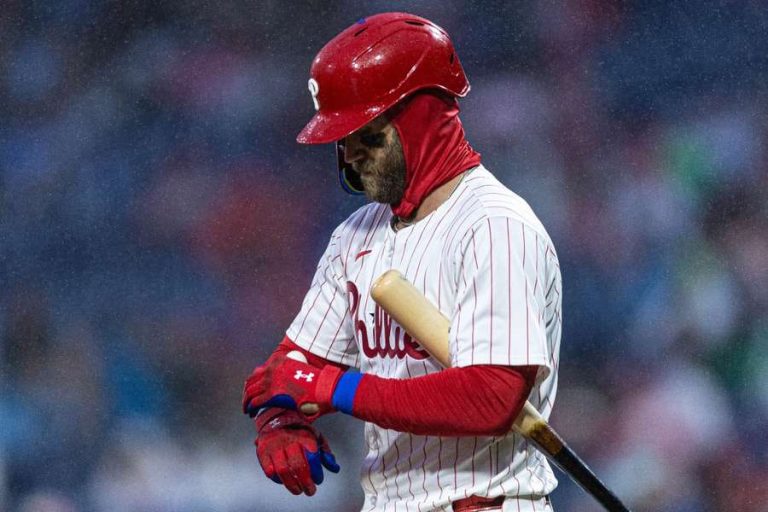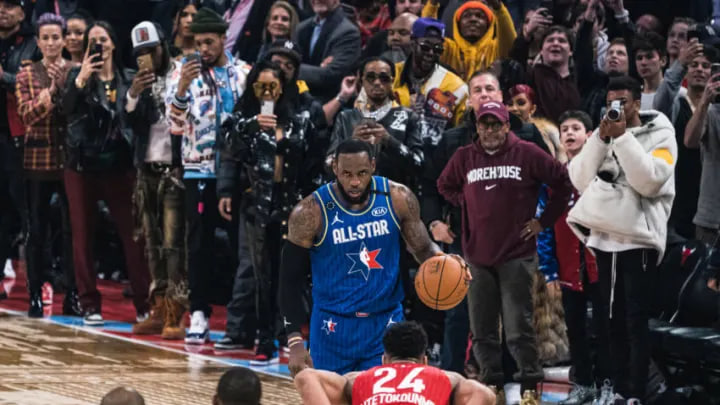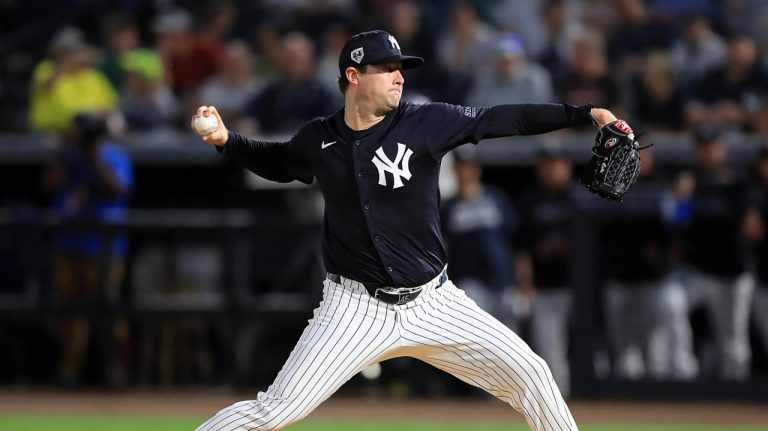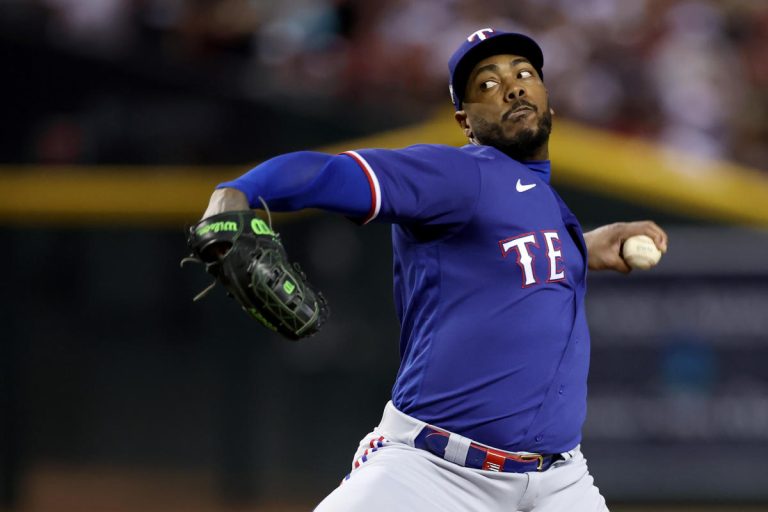Pirates’ Fastballs Shine on the Day of Heaters That Reach 100 MPH
The noise resonating from Pittsburgh following the Pirates’ 10-6 victory over the Los Angeles Dodgers on Wednesday evening is a testament to the power and precision of blazing fastballs slicing through the cool night air along the Allegheny River. Pirates pitchers Paul Skenes and Aroldis Chapman headlined an extraordinary day across Major League Baseball (MLB), where a remarkable 63 pitches clocked at 100 mph or more were thrown. According to MLB research, this feat marked the fourth highest number of 100-mph fastballs recorded in a single day.
The only instances surpassing this record occurred on July 26, 2022, with 67 pitches thrown over the century mark, June 9, 2023, with 74 such pitches, and the staggering 82 fastballs exceeding 100 mph on March 30 of last season. These statistics were provided by MLB researcher Sarah Langs, highlighting the growing prevalence and impact of high-velocity pitching in today’s game.
Skenes’ Breakthrough Performance
Paul Skenes, the Pirates’ electrifying rookie right-hander, made significant contributions to this notable day. In a standout moment, Skenes struck out the Dodgers’ Shohei Ohtani on three pitches in the first inning. This performance was historically significant as Skenes became the first pitcher since the advent of pitch tracking in 2008 to achieve a three-pitch strikeout with each pitch clocking in at 100 mph or more, including a swing and miss.
Reflecting on his performance, Skenes shared his thoughts with reporters: “I think the biggest thing is just as I’ve been up here, there’s not a book really on what I need to do, we’re kind of writing as we go along. So, how to throw my pitches, where to throw my pitches, when to throw my pitches, that kind of thing. We’re just learning as we go along.” His outing on Wednesday saw him throw a career-best 18 pitches over 100 mph, underscoring his potential and the raw power he brings to the mound.
Chapman’s Show-Stealing Seventh Inning
Despite Skenes’ impressive display, it was Aroldis Chapman who ultimately stole the show in the seventh inning. The veteran left-hander, at 36 years old, demonstrated that he still possesses one of the most formidable arms in baseball. Chapman delivered a 104-mph pitch to the Dodgers’ Teoscar Hernandez, one of five pitches in the inning that reached at least 103 mph. His ability to consistently throw at such high velocities remains unparalleled and continues to captivate fans and opponents alike.
Other High-Velocity Performances Across MLB
The day was not limited to Pittsburgh in showcasing exceptional fastball velocity. In Anaheim, California, Los Angeles Angels right-hander Ben Joyce made a spectacular season debut in relief against the San Diego Padres. Joyce threw 12 pitches clocking at least 101 mph, including a pitch that reached 103.3 mph. Angels manager Ron Washington commented on Joyce’s performance, saying, “He just reached back and kept it in the strike zone: ‘Hit me if you can.'”
Oakland Athletics right-hander Mason Miller also made headlines by hitting 102 mph on the radar gun four times in his outing against the Seattle Mariners, with a top speed of 102.5 mph. These performances collectively illustrate a broader trend in MLB, where pitchers are increasingly capable of delivering triple-digit fastballs, making the game more thrilling and challenging.
Check our baseball tips and predictions!
Historical Context and Modern Trends in Fastball Velocity
The increasing frequency of 100-mph fastballs is a testament to advancements in player training, conditioning, and biomechanics. The evolution of pitcher development programs, enhanced by modern technology and analytics, has enabled pitchers to refine their techniques and maximize their velocity. This shift towards higher velocities has significant implications for both pitchers and hitters.
For pitchers, the ability to throw at such high speeds can be a critical asset, providing a psychological edge and increasing the difficulty for batters to make contact. However, it also comes with increased physical demands and a heightened risk of injury, necessitating rigorous training and recovery protocols to maintain arm health and longevity.
For hitters, facing triple-digit fastballs requires exceptional hand-eye coordination, quick reflexes, and advanced preparation. The challenge of adjusting to higher velocities has led to changes in batting techniques and strategies, as hitters strive to keep up with the evolving landscape of MLB pitching.
Impact on the Game and Fan Engagement
The rise of high-velocity pitching has also impacted fan engagement and the overall excitement of the game. Triple-digit fastballs, often accompanied by high strikeout rates, contribute to the drama and intensity of baseball, drawing in audiences and creating memorable moments. The spectacle of a pitcher consistently hitting or surpassing 100 mph captivates fans and adds an element of awe to the sport.
Moreover, the data-driven analysis and tracking of pitch velocities provide fans with deeper insights into the game, enhancing their understanding and appreciation of the skills and athleticism involved. The integration of advanced metrics and real-time data into broadcasts and digital platforms has made the game more accessible and engaging for a wider audience.
Future Prospects and Developments
Looking ahead, the trend of high-velocity pitching is likely to continue as advancements in sports science and technology further enhance player development. Innovations in training methodologies, recovery techniques, and performance analytics will play a crucial role in sustaining and potentially increasing pitch velocities.
However, balancing the pursuit of velocity with player health and sustainability will be essential. Ensuring that pitchers can maintain high-performance levels without compromising their long-term health will require ongoing research, collaboration, and innovation within the baseball community.
As MLB continues to evolve, the blend of tradition and modernity will shape the future of the sport. High-velocity pitching, epitomized by performances like those of Skenes, Chapman, Joyce, and Miller, will remain a central and captivating aspect of the game, driving both competitive dynamics and fan enthusiasm.
Conclusion
The Pirates’ victory over the Dodgers on Wednesday was more than just a game; it was a showcase of the incredible power and precision that modern pitchers bring to the mound. The performances of Paul Skenes and Aroldis Chapman, along with other high-velocity pitchers across MLB, highlight a significant trend in baseball. As the sport continues to evolve, the rise of 100-mph fastballs will remain a focal point of excitement and innovation, captivating fans and challenging hitters in new and exhilarating ways.
Bullet Points:
- The Pirates defeated the Dodgers 10-6, highlighted by numerous 100-mph fastballs.
- Paul Skenes and Aroldis Chapman headlined the day, with 63 pitches over 100 mph thrown across MLB.
- This was the fourth highest number of 100-mph fastballs thrown in a single day in MLB history.
- Skenes struck out Shohei Ohtani with three pitches all over 100 mph, a first since pitch tracking began in 2008.
- Skenes threw a career-best 18 pitches over 100 mph in his outing.
- Chapman delivered a 104-mph pitch, one of five pitches over 103 mph in the seventh inning.
- Los Angeles Angels’ Ben Joyce threw 12 pitches of at least 101 mph, with a top speed of 103.3 mph.
- Oakland Athletics’ Mason Miller hit 102 mph on the radar gun four times, maxing at 102.5 mph.
- The increase in high-velocity pitching is due to advancements in training, conditioning, and biomechanics.
- High-velocity pitching impacts both pitchers’ health and hitters’ techniques.
- The trend enhances fan engagement and the overall excitement of the game.
- Future prospects include sustaining high performance levels while ensuring player health.
- High-velocity pitching will remain a central aspect of MLB, driving competitive dynamics and fan enthusiasm.


